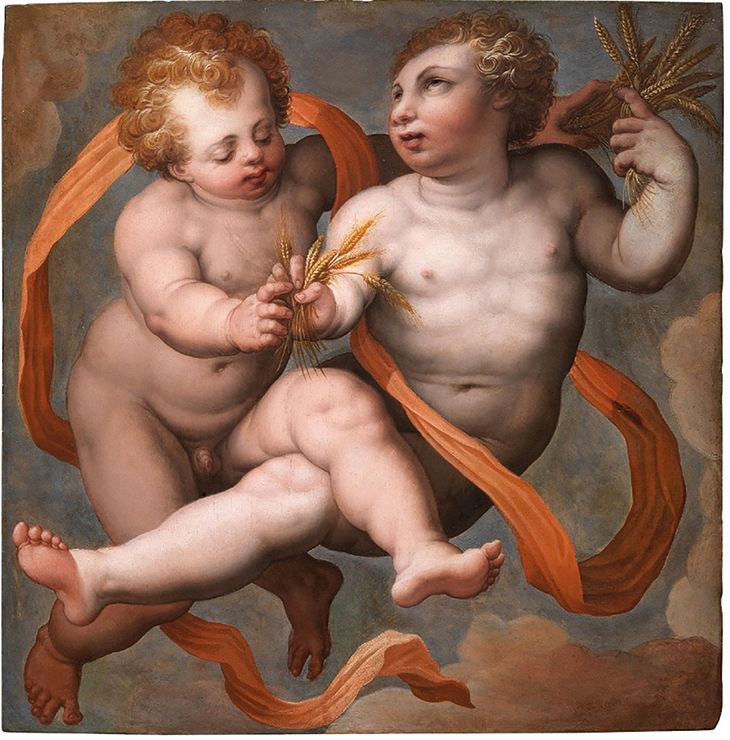The seventh edition of Flashback (31 October–3 November), Turin, takes as its theme ‘The Wanderers’, a title adapted from The Time Wanderers, a science-fiction novel of 1986 by the Soviet writers Arkady and Boris Strugatsky. This is an art fair that, perhaps more than any other, has fun with the conviction that ‘all art is contemporary’ (as its motto has it), as around 50 dealers present works from the classical to post-war periods.
For those visitors to Turin who may – after months zipping between art fairs – have started to feel like wanderers themselves, a few days in the city will come as a welcome pause. Yes, there are the first-rate museums to explore, as well as an array of fairs – Flashback, Artissima (1–3 November) and The Others, a show dedicated to emerging artists and presented in the atmospheric setting of a former military hospital (31 October–3 November). But also to dwell on are the palate-teasing pleasures of autumn in Piedmont: early November, after all, is the height of the white truffle season.
Allegory of the Fruits of Summer (early 1570s), Giorgio Vasari. Piacenti

It is summer and winter that take centre stage at Flashback, though, since the highlights of the fair this year include two seasonal panels by Giorgio Vasari that depict pairs of pumped-up putti tussling over ears of wheat and a clutch of root vegetables – attributes of the respective seasons. The panels, on the stand of London-based Piacenti, were once elements of a ceiling in a building that remains unidentified, for all that a drawing in the collection of the Art Institute of Chicago maps out the full decorative scheme; the late Charles Davis connected the sheet to the lost ceiling of Vasari’s own house in Borgo Santa Croce, Florence.
The natural world is also corralled into art on the stand of Biasutti & Biasutti, which displays Pietre (Stones, 1966) by the Turin-based Piero Gilardi – an influential figure in the development of Arte Povera in the city, but today perhaps less widely recognised than many of his peers. Gilardi is best known for his ‘Tappeti-natura’ (Nature-carpets), which reproduce parcels of land in moulded polyurethane with uncanny realism; this piece simulates a patch of stony ground. The gallery will also be showing works by other modern and contemporary artists with close ties to the city, including the late Aldo Mondino – represented here by pieces including Singe (1989), a Duchampian work that strips down and resets an antique Singer sewing machine as – hey presto! – a singe (French for ‘monkey’).
Pietre (1966), Piero Gilardi. Biasutti & Biasutti

Further sculptural highlights range from a dancing horse figure dating to the Tang dynasty, at Asian-antiquities specialists Schreiber Collezioni, to a polychrome figure of the Infant Virgin dated to around 1550 at Flavio Pozzallo. As ever, Italian painting is well represented – and not least the modern period, at Galleria Russo and Galleria dello Scudo, among others. For Flemish painting, head to Caretto & Occhinegro, who pick up the nomadic leitmotif of the fair with a landscape depicting the Rest on the Flight to Egypt, a large oil on copper of around 1630 by Jan Bruegel II and Pieter van Avont that was probably created for the Spanish or Spanish colonial market.
At Artissima, meanwhile, the theme is ‘desire/censorship’. This is taken up in the offsite project ‘Abstract Sex: We don’t have any clothes, only equipment’, an exhibition at the avant-garde fashion boutique Jana that explores how the affinities of bodies, objects and machinery have been prospected by post-war and contemporary artists. But there will be plenty to keep visitors engrossed at the fair at the Oval Lingotto, too – not least with the inauguration of HUB Middle East, an initiative that brings together a number of leading galleries from the region, among them Athr Gallery (Jeddah), Marfa’ (Beirut) and Grey Noise (Dubai). You might need to set aside time for those truffles, after all.
Landscape with Holy Family (c. 1630), Jan Bruegel II and Pieter van Avont. Caretto & Occhinegro

Flashback runs from 31 October–3 November at the Pala Alpitour, Turin.
From the October 2019 issue of Apollo. Preview and subscribe here.



